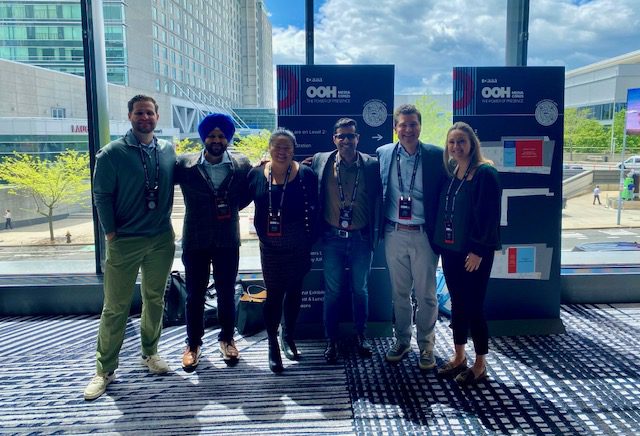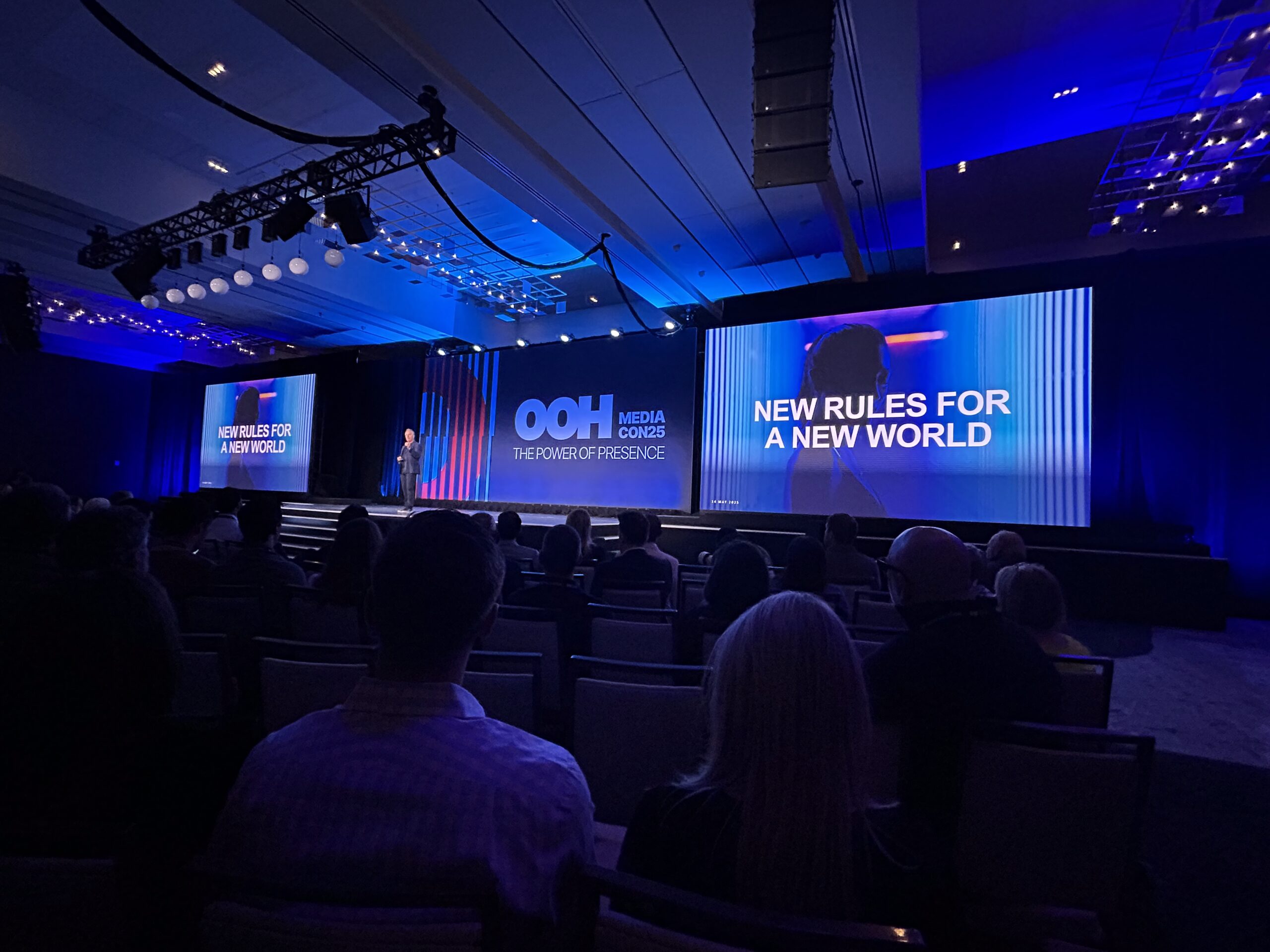This week, the OneScreen.ai team attended the OAAA 2025 Conference in Boston — an event that brings together leaders across the out-of-home (OOH) advertising industry to discuss where the industry is heading and what it will take to keep brands both competitive and compelling in today’s media landscape. A few themes emerged again and again across panels, CEO keynotes, and data-driven sessions: measurement is foundational, AI is evolving (with caution), and OOH’s ability to deliver real-world impact is more valuable than ever.
Measurement = Value
One of the most consistent messages across the event was that without credible measurement, there’s no perceived value in media. Or as one speaker put it succinctly: “No measurement = no value.” This was echoed in conversations around currency vs. measurement: two distinct but intertwined aspects that define how OOH is bought, sold, and evaluated.
George Ivy of the Media Rating Council emphasized ongoing efforts to audit measurement methodologies to drive trust and consistency across the industry. Similarly, Geopath is taking significant steps to modernize its mobility data, including analyzing trip origins and destinations to better inform roadside OOH reach and frequency. Their goal? Greater transparency and more granular insights for buyers and sellers alike. As Geopath stated. “Data is a non-negotiable imperative.”
AI, Programmatic, and the Shifting Tech Stack
Artificial intelligence, unsurprisingly, made its way into many conversations, but with a healthy dose of skepticism. While AI has exciting potential, there’s increasing concern around trust, transparency, and misuse. That said, AI-powered tools and automation are helping to fuel interest in programmatic buying, especially at the local market level. With lower CPMs and faster activation, programmatic is proving to be an effective option for awareness-driven campaigns.
Michael Provenzano, CEO of Vistar Media, spoke about where they’re investing next: enhancing internal operations, expanding internationally, and leveraging carrier-level data to improve targeting. Retail media was another area of excitement, particularly in how mobile partnerships, like their work with T-Mobile, are enhancing OOH capabilities.
Insights from the CEO Panel
The CEO panel—featuring leaders from Lamar, Clear Channel Outdoor (CCO), and Outfront—touched on everything from third-party attribution to MMM (Marketing Mix Modeling). While MMM still presents challenges for OOH due to data compatibility, there’s clear momentum in integrating exposure data into brand workflows. CCO, for example, is using clean room environments to match exposure data with brand outcomes, providing a clearer picture of incrementality and customer journey insights.
One standout takeaway from Lamar’s CEO, Sean Reilly: attribution isn’t just about proving value, it’s about enabling smarter buying decisions moving forward.
Quotes That Stuck With Us
Throughout the conference, several soundbites offered sharp perspectives on where OOH sits today, and where it’s going:
- “OOH is a legacy media, but drives results with increased sophistication.” – Nick Brien, CEO of Outfront
- “We gain credibility through transparency.” – Geopath
- “There’s a difference in selling against and selling with to gain share.” – Sean Reilly, CEO of Lamar
- And a quote borrowed from Steve Jobs that resonated deeply with our team:
“You can’t look at the competition and say you’re going to do it better. You have to look at the competition and say you’re going to do it differently.”
This mindset of doing things differently should be top of mind for every agency and marketer looking to carve out their edge in an increasingly crowded space.
The Enduring Strength of OOH
Ultimately, what sets OOH apart isn’t just its scale; it’s the realness of the experience. It reaches people in their everyday lives, sparking emotions in a way that digital channels can’t replicate. As the industry continues to modernize through better data, smarter tech, and more transparent practices, OOH is positioned to become not just a supporting act but a centerpiece in omni-channel strategies.
OOH reaches audiences that other media can’t. And with the right tools, we can now show it works, with sophistication, scale, and credibility.

